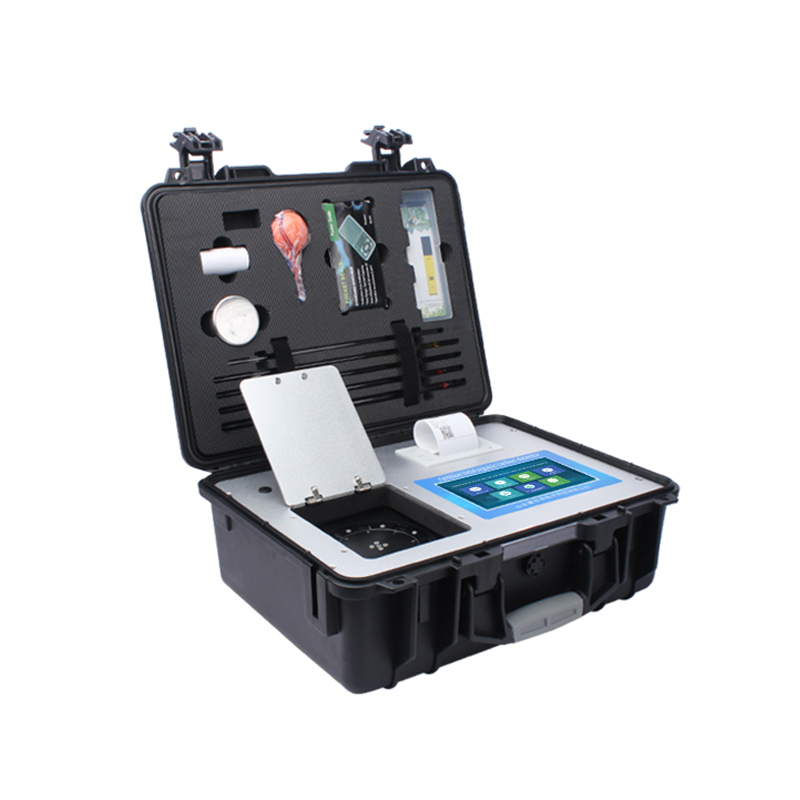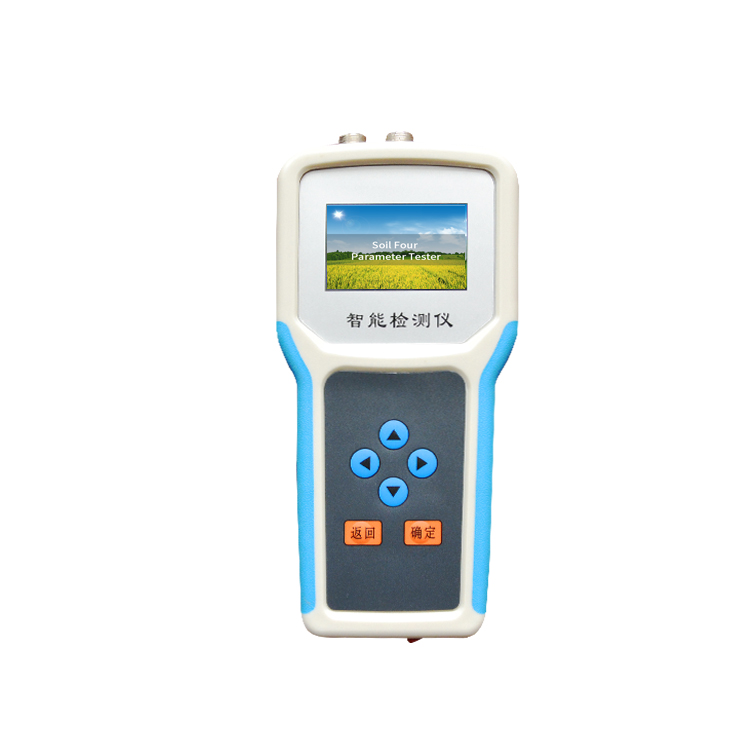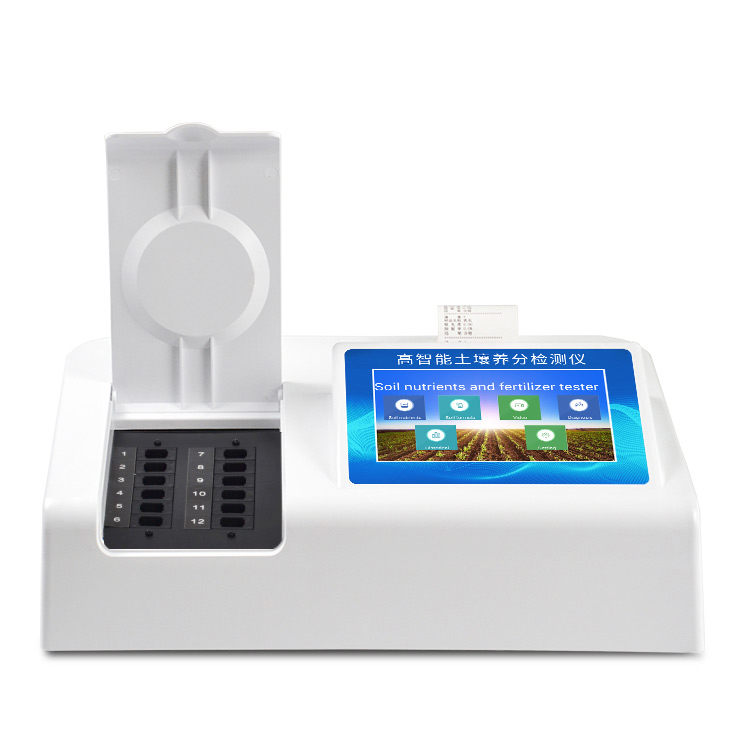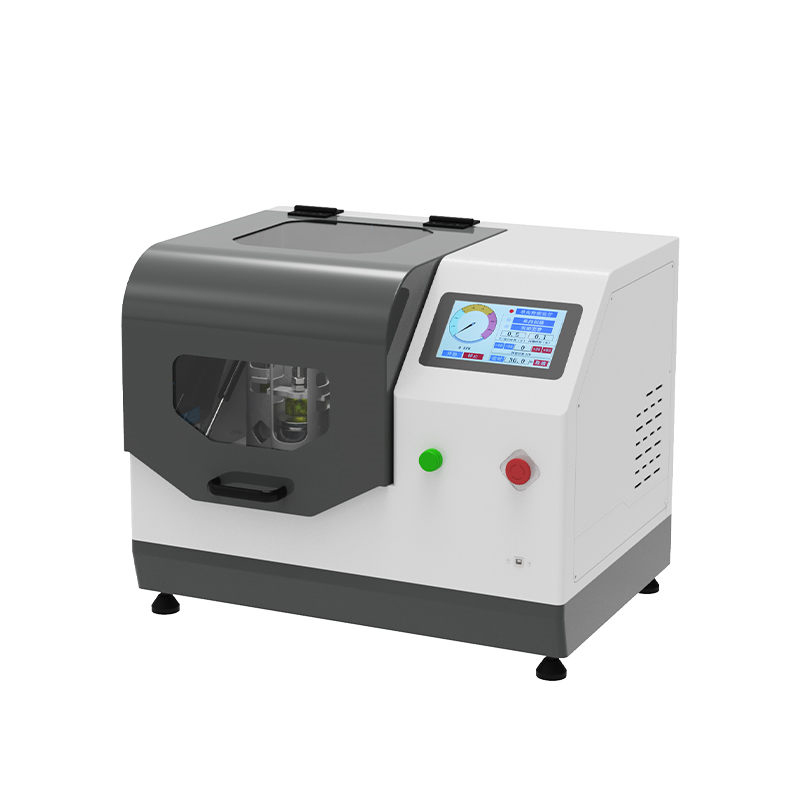
Introduction:
The total organic carbon and carbon nitrogen ratio of soil and fertilizer are two different indicators used to describe the characteristics of organic matter in soil and fertilizer.
Total organic carbon and carbon nitrogen ratio of soil:
The total organic carbon of soil refers to the total amount of organic carbon in the soil, including plant and animal residues, microorganisms, organic fertilizers, etc. The total organic carbon content of soil is one of the important indicators for evaluating soil quality and health, which has a significant impact on soil fertility, water retention capacity, and ecosystem functions.
The value of soil carbon nitrogen ratio can be obtained based on the analysis results of soil samples. Generally speaking, soil organic carbon content is usually high, while organic nitrogen content is relatively low. Therefore, the typical range of soil carbon to nitrogen ratio is usually between 10:1 and 20:1. Factors such as different soil types, soil textures, vegetation types, and management practices can affect the soil carbon nitrogen ratio, so the specific values may vary. The significance of this is that it can provide information about soil nutrient cycling and organic matter decomposition.
Low carbon to nitrogen ratio (lower value) usually indicates a faster degradation rate of organic matter in the soil, relatively higher organic nitrogen, and possibly higher soil fertility. A high carbon to nitrogen ratio (higher value) usually indicates a slower rate of organic matter decomposition in the soil, relatively low organic nitrogen, and possibly lower soil fertility. Therefore, an appropriate carbon nitrogen ratio helps maintain soil health and fertility.
Total organic carbon and carbon nitrogen ratio of fertilizers:
The total organic carbon content of organic fertilizers and compost depends on the type of raw materials and the treatment method of the composting process. Normally, compost contains a higher total organic carbon content, while the total organic carbon content of organic fertilizers varies depending on their raw materials. Understanding its total organic carbon content is of great significance for evaluating its nutrient supply capacity and soil improvement effectiveness. These indicators can be used to guide the selection and rational application of organic fertilizers to meet the nutrient needs of crops and improve soil quality and ecosystem health.
The carbon nitrogen ratio of organic fertilizers can vary greatly, depending on the type of organic fertilizer and the composition of the raw materials. Generally speaking, the carbon and nitrogen content of organic fertilizers is relatively low, usually ranging from 10:1 to 20:1. Different types of organic fertilizers have different carbon to nitrogen ratios. For example, the carbon to nitrogen ratio of poultry manure is approximately between 10:1 and 15:1, while the carbon to nitrogen ratio of legume plant residues may be closer to 20:1. In addition, the treatment methods, proportion of raw materials, and degree of decomposition during the composting process can also affect the carbon nitrogen ratio of organic fertilizers.
Multi functional and complete testing items:
1. Soil nutrients: Total organic carbon (TOC), soil carbon nitrogen ratio, ammonium nitrogen, soil available phosphorus, soil available potassium, soil nitrate nitrogen, soil hydrolyzed nitrogen, soil total nitrogen, soil total phosphorus, soil total potassium, soil organic matter (hill forest method), soil organic matter (leaching method), pH value, salt content, and moisture. Trace elements in soil: soil calcium, soil magnesium, soil sulfur, soil silicon, soil boron, soil iron, soil copper, soil manganese, soil zinc, soil chlorine; Soil heavy metals: soil lead, soil arsenic, soil cadmium, soil chromium, soil mercury.
2. Fertilizer nutrients: Total organic carbon (TOC) of organic fertilizer, organic fertilizer carbon nitrogen ratio, total nitrogen, organic fertilizer total phosphorus, organic fertilizer total potassium, organic fertilizer nitrate nitrogen, organic fertilizer available phosphorus, organic fertilizer available potassium, organic fertilizer acid hydrolyzed nitrogen, organic matter; ● Carbon nitrogen ratio, total nitrogen, total phosphorus, and total potassium of compound fertilizer; Water soluble fertilizer carbon nitrogen ratio, total nitrogen, water soluble fertilizer total phosphorus, water soluble fertilizer total potassium; Leaf fertilizer carbon nitrogen ratio, total nitrogen, leaf fertilizer total phosphorus, leaf fertilizer total potassium; ● Water soluble humic acid (weathered coal), water soluble humic acid (lignite), water soluble humic acid (peat), free humic acid (weathered coal), free humic acid (lignite), free humic acid (peat); ● Elemental fertilizers: ammonium nitrogen in nitrogen fertilizers, nitrate nitrogen in fertilizers, urea nitrogen, urea nitrogen, phosphorus in phosphorus fertilizers, water-soluble phosphorus in phosphorus fertilizers, and potassium in potassium fertilizers; Various trace elements in fertilizers: fertilizer calcium, fertilizer magnesium, fertilizer sulfur, fertilizer silicon, fertilizer boron, fertilizer iron, fertilizer copper, fertilizer manganese, fertilizer zinc, fertilizer chlorine; Fertilizer heavy metals: fertilizer lead, fertilizer arsenic, fertilizer cadmium, fertilizer chromium, fertilizer mercury.
Testing efficiency:
Simultaneous extraction and determination of multiple nutrients such as efficient nitrogen, phosphorus, and potassium in soil at once (drafter of the Ministry of Agriculture's rapid testing industry standard).
Simultaneous, rapid, and accurate detection of nutrients such as nitrogen (N), phosphorus (P), and potassium (K) in fertilizers.
Test speed:
At normal proficiency level:
Measuring three soil samples (N, P, K) takes 20 minutes (including preparation time for chemicals and soil sample pretreatment time), while testing three soil samples (N, P, K) for ≤ 40 minutes, and testing eight soil samples for ≤ 1 hour.
Test one fertilizer sample (N, P, K) for ≤ 50 minutes, and simultaneously test three fertilizer samples (N, P, K) for ≤ 1.5 hours.
Test error:
The error of soil nitrogen, phosphorus, and potassium is ≤ 1%, the error of organic matter is ≤ 2%, and the relative error of trace elements is ≤ 5%; The single error of fertilizer is ≤ 0.5%, and the error of nitrogen, phosphorus, and potassium is ≤ 1%;
The relative error of heavy metals is less than or equal to 5%.
Functional features:
★ 1. Android intelligent operating system, the main control chip adopts ARM Cortex-A7, RK3288/4-core processor, with a main frequency of 1.88GHz, faster operation speed and stronger stability.
★ 2. Adopting a precision rotating colorimetric cell design (patent number: ZL 2018 2 1777724.7), the consistency of the light source is more accurate, ensuring detection accuracy.
★ 3, 12 rotating detection channels, can quickly detect 12 samples at once, greatly improving detection efficiency and reducing detection costs.
★ 4. Adopting high-precision filter technology and independent patent analysis method (patent number: ZL 2020 2 1763837.9), with authoritative certification.
★ 5. Built in calibration function during the detection process, intelligent constant current and voltage stabilization, automatic calibration of light intensity, ensuring detection accuracy, and obtaining the "Calibration Certificate" from the China Institute of Metrology.
★ 6. The instrument comes standard with WiFi wireless upload, 4G network transmission, and GPRS wireless remote transmission for fast data upload.
★ 7. Equipped with a smart cloud agriculture platform, the instrument can be connected to a wireless network to selectively or batch upload detection data wirelessly, making it convenient for users to conduct long-term data management and visual analysis.
8. The instrument is equipped with both USB and Ethernet interfaces, built-in large capacity memory, and can copy data with a USB flash drive at any time.
★ 9. You can log in to the cloud platform at any time with your mobile phone and view historical data online
★ 10. Equipped with a crop expert fertilization system, it can calculate recommended fertilization amounts for over a hundred national agricultural economic crops, fruit trees, and other target yields, and scientifically guide agricultural production based on fertilization formulas. The results of soil testing formula fertilization can be printed, including: crop type, fertilizer type, target yield, total demand, and recommended fertilization plan.
11. Built in plant nutrition diagnostic standard map, based on images of nutrient deficiency in various crops, conduct leaf comparison to diagnose abundance and deficiency.
★ 12. 4 wavelength professional testing cold light source (red, blue, green, orange), stable light source wavelength, long-term continuous operation without temperature drift phenomenon, with a lifespan of up to 100000 hours, good reproducibility, and high accuracy.
13. The colorimetric cell adopts a standard 1cm colorimetric dish, with no mechanical displacement or wear. The optical path testing positioning is precise, effectively shielding external light interference and ensuring that the detection results are better than the national standard requirements.
★ 14. The instrument system comes with sample pre-treatment operation videos, and various sample detection methods can be viewed by clicking on the video module. Testing personnel do not need to self-study the instruction manual, and the guidance and teaching are convenient and fast, making it easy for beginners to operate quickly.
15. Built in new generation high-speed thermal printer (no ribbon required), printing content includes information such as testing unit, testing personnel, testing items, channel number, absorbance, nutrient content (mg/kg), testing time, and QR code
★ 16. High sensitivity 7-inch true color touch screen, adopting more efficient and user-friendly operation, high-definition and high interactive display, greatly reducing the tedious operation and errors of traditional instruments, and obtaining multiple software copyrights.
17. Built in clock function, convenient for time recording and long-term historical traceability.
18. Multiple account passwords can be set for login, with an efficient UI interactive interface. Different users can freely add and edit detection information, which can be saved for long-term use.
19. GPS function: It can record latitude and longitude locations during field operations to meet special user needs.
20. Built in low voltage prompt function, which can clearly indicate the battery level during detection to avoid test data deviation. At the same time, it has power-off protection function, which automatically saves data during power-off to prevent data loss.
21. Dual use AC/DC power supply method, built-in large capacity rechargeable lithium battery, can work continuously for more than 10 hours when fully charged, and can also be connected to an external vehicle power supply for storage.
★ 22. The instrument has a Chinese English switching function, which can meet export requirements.
23. High strength PVC engineering plastic carrying case design, sturdy and durable, easy to carry.
Technical parameters:
1. Power supply: AC 220 ± 22V DC 12V+5V (the instrument has a built-in lithium battery and can also be powered by a car power supply)
2. Power: ≤ 5W
3. Range and Resolution: 0.001-9999
4. Repeatability error: ≤ 0.02% (0.0002, potassium dichromate solution)
5. Instrument stability: No drift in displayed numbers within one hour (transparency measurement); The numerical drift within two hours should not exceed 0.3% (0.003 for transparency measurement) and 0.001 (for absorbance measurement).
6. Linear error: ≤ 0.1% (0.001, copper sulfate detection)
7. Sensitivity: Red light ≥ 4.5 × 10-5 Blue light ≥ 3.17 × 10-3 Green light ≥ 2.35 × 10-3 Orange light ≥ 2.13 × 10-3
8. Wavelength range: Red light: 680 ± 2nm; Blue light: 420 ± 2nm; Green light: 510 ± 2nm; Orange light: 590 ± 4nm
9. PH value (pH): (1) Test range: 1-14 (2) Accuracy: 0.01 (3) Error: ± 0.1
10. Salt content (conductivity): (1) Test range: 0.01% to 1.00% (2) Relative error: ± 5%
11. Soil moisture technical parameters Water unit:% (g/100g); Moisture content testing range: 0-100%; Error less than 0.5%
12. Display screen resolution: 1024 * 600
13. Seismic rating: IP65
14. Instrument size: 48 × 34.5 × 22cm
15. Net weight of the host: 5.2kg
Article address:https://www.soiltesting.cn/pro13/81.html
- Previous article:no more
- Next article:no more

 +86 17853698681
+86 17853698681






